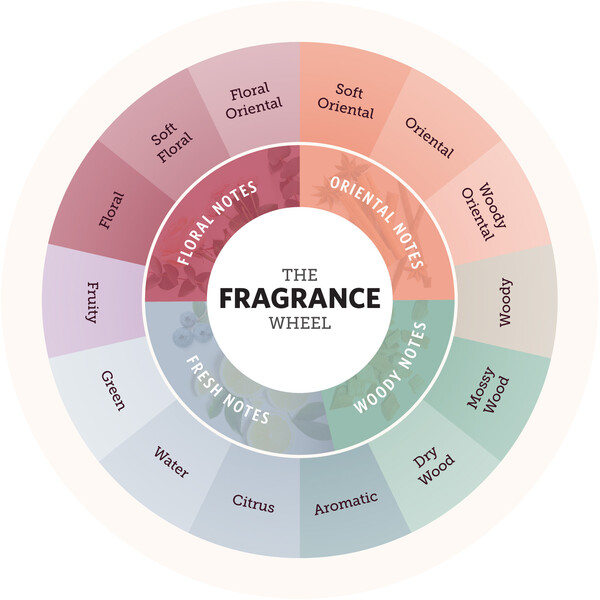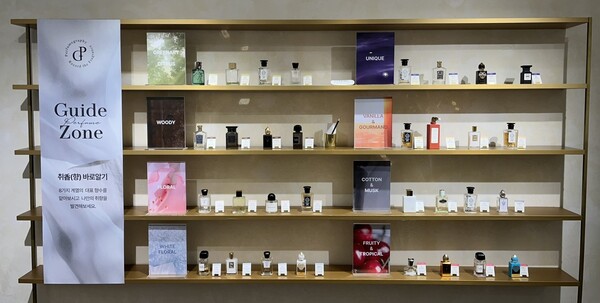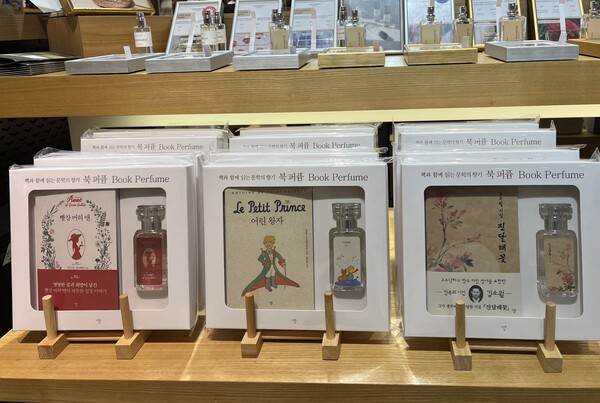Take a deep breath; the crisp scent of the frosty morning air, the rich aroma of the freshly brewed latte, and the sweet fragrance of the festive holiday atmosphere all signal that December is officially here. As the season shifts, so do the scents that define it, evoking wonderful nostalgia. This winter, the Sungkyun Times (SKT) delves into the mesmerizing realm of the art of scent — perfumes.
The Unseen, Unforgettable, and Ultimate Accessory
-Culture in a Bottle
Derived from the Latin term per fumum, meaning “through smoke,” perfume is a liquid substance used to impart a pleasant scent. It is one of the earliest cosmetic products created by mankind, with ancient civilizations initially using it for religious purposes. Historically, perfume was a luxury reserved for the elite, and wealthy individuals would personally commission a perfumer to craft one for themselves, with expensive natural ingredients such as sandalwood and ambergris. However, in the 19th century, its accessibility and popularity grew with the rise of European perfume companies. Further, rapid innovations in chemical technology introduced synthetic fragrances. This enabled modern perfume-making, which involves diluting a mix of natural and artificial scents in a solvent, most commonly ethanol. Today, perfumes are categorized based on the concentration of such aromatic solutes. The three most common types are French in origin: eau de parfum, eau de toilette, and eau de cologne, with concentrations of 10-20%, 5-15%, and 2-5%, respectively.
-An Ensemble of Notes
As smell is a concept difficult to capture in words, experts have long strived to develop a systematic way to describe perfumes. In this effort, early perfumers adopted an analogy of music to refer to the different layers of perfume as notes. Each perfume contains three types of notes — a top, middle, and base — that unfold over time. The top note is the first scent one can smell after spraying the perfume, acting as its first impression. The middle note lasts longer, and the base note is the most persistent, influencing the perfume’s overall character. Various fragrances make up each note, and although details vary by company, a widely accepted method for naming them is the Fragrance Wheel created by the British fragrance taxonomist Michael Edwards. His Fragrance Wheel categorizes scents into four major groups — floral, fresh, oriental, and woody, and within these groups, 14 primary scents are further classified. The combination of notes determines the perfume’s genre and mood, much like how musical notes make up the tone of a composition.

The Magic in the Spray
Perfume has long been popular due to the underlying charm of its pleasant aroma. Scientifically, fragrances profoundly impact individuals due to the mechanics of the human body. The olfactory system within the brain, which is responsible for the sense of smell, is directly linked to the limbic system that governs emotion and memory. This strong connection explains the Proust Effect, which is the phenomenon when certain scents unconsciously evoke specific experiences or feelings. Because of this unique characteristic, perfumes are powerful tools for expressing one’s identity and leaving lasting impressions. In an interview with the SKT, President Choi Taewon of the school perfume club Hyangsil explained, “Scents convey different emotions based on whether they are light or dark — for instance, among floral notes, freesia is on the light side, projecting friendliness and energy, while roses are on the dark, evoking sophistication and chic.” Popular light scents include Tom Ford’s Neroli Portofino, a fresh summery perfume; in contrast, darker options like Diptyque’s Tam Dao offer a rich, woody aroma. Therefore, a spray of perfume can make a world of difference, bringing joy to the nose and stirring feelings in the heart.
An Alluring Invitation for Kingos
The magnificent world of perfumes lies just around the corner — in Seoul City, two delightful destinations await Kingos. The first location is Perfumegraphy, a welcoming, well-designed perfume select shop near Hyehwa Station. This shop allows visitors to explore a wide variety of perfumes for free, and Kingos are sure to find one here that speaks to their heart. Perfumegraphy encourages guests to first sample the signature scents of each fragrance family in the Guide Zone and examine the individual products.

In an interview with the SKT, Perfumegraphy employee Oh Jae-won recommended Gris Charnel by BDK Parfums as an ideal gender-neutral winter perfume for Kingos, adding, “Although perfume might seem exclusive, we believe it should be enjoyed by all — our knowledgeable staff members are more than happy to help visitors find their signature scent.” For a more unique experience, the SKT encourages Kingos to visit the Kyobo Book Centre by Gwanghwamun Station, where particular types of perfume can be purchased — book perfumes. These perfumes were specially crafted to encapsulate the themes of beloved novels such as The Little Prince and Anne of Green Gables. Using them while reading adds a new layer to the experience, immersing readers in a sensory journey that vividly brings each story to life. Whether visiting with friends, loved ones, or on a solo adventure, Perfumegraphy and Kyobo Book Centre promise to add a touch of romance to Kingos’ daily lives.

As the Italian fashion designer Giorgio Armani once said, “A perfume is more than an extract; it is a presence.” With the right choice of perfume, one can transcend the every day, allowing one to step into the persona one wants to be. Kingos, as the semester draws to a close, why not embark on a journey to discover the perfect scent and set the tone for a fresh, inspiring new year?
